萬福寺Manpukuji Temple
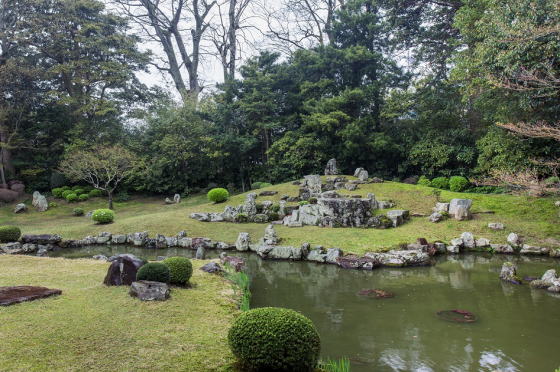
INFORMATION
| Hours | 8:30~17:00 Always open |
|---|---|
| Admission | 500yen(General), 300yen(Age16-18), Free( Age15 & under) 【100 yen discount per person for groups of 20 or more】 |
| Parking | Bus: 1 stall, Car: 15 stalls |
| Address/ TEL | 25-33, Higa-shi-machi / TEL:0856-22-0302 |
It holds three important assets of Japan. The sect is Ji-shu.
【History】
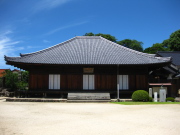
Manpukuji (Main Hall)
Built in 1374.Important Cultural Property of Japan.
Manpukuji temple was established in Nakanoshima district more than nine
hundred years ago. In 1374, the 11th Lord, Masuda Kanemi, relocated
the temple to a place in the neighborhood of his residence and worshiped as his
family temple.
In June 1866, the Second Choshu expedition,
a punitive expedition led by the Tokugawa Shogunate against the Choshu domain,
started. But the Choshu forces which were modernized with mobile clothes and
modern gear drove away the Tokugawa forces which wore heavy antique armors with
old fashioned arms.
On June 16, the Choshu troop led by Omura Masujiro attacked the Tokugawa troop at Manpukuji. It was a raging battle. The escaping Tokugawa soldiers burned a gate of Manpukuji and houses around it. Fortunately some of Choshu soldiers were retainers of Masuda clan who relocated his home from Masuda to Choshu because of the failure of the Sekigahara Battle in 1600. The Choshu soldiers put out the fires with local people and protected Manpukuji temple. For those soldiers, Manpukuji temple was also their ancient’s temple.
Bullet-marks on a pillar in the main hall convey this history.
Sesshu’s Garden of Manpuku-ji
(Scenic Beauty of Japan, also an historic site)
The garden was constructed about 500 years ago by Sesshu Toyo, a painter-monk
who brought Japanese Ink-painting to perfection. This garden expresses
the doctrine of Zen Buddhism. Rocks were put in appropriate positions,
making the Shumisen-stone in the midpoint. The Mt.Shumisen was thought
as the center of the Buddhist Universe.
When you enter the room facing to the
garden, the bright view of the garden framed by dark rooms comes into your
eyes. It is a very impressive view.
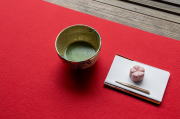
Matcha Green Tea at Manpukuji Temple
You can enjoy Matcha Green Tea at Manpukuji Temple.Enjoy some Matcha green tea as you peacefully gaze upon the garden. Unwind and cast your mind on the Muromachi period.
Tea & Cake: 400yen (3-days in advance reservation required. Please see below for the order form)

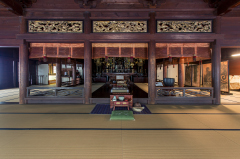
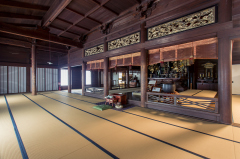
Manpukuji main hall
This main hall was built in 1374, the early Muromachi period, and remains the atmosphere of warrior’s times in the medieval period. As local people have respected this temple very much, it could survive against natural disaster and fires of war.
The principal image of Buddha: Amitabha (a work in Heian period)
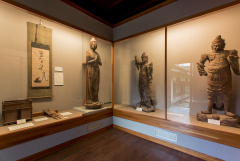
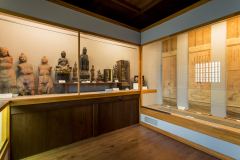
Manpukuji treasure rooms
Manpukuji has two treasure rooms which exhibit statues, pictures, documents, a traditional vehicle which was used by main priests to visit the Imperial Court in Kyoto, and scalps of earthquake victims in 1026. The most noticeable display is a replica of ‘Niga-byakudo-zu’(two rivers and a white road) , a work in Kamaura period(1185-1333). This picture is designated as a national important cultural property, so the original is usually protected in a museum and can be open to public only 30 days a year.